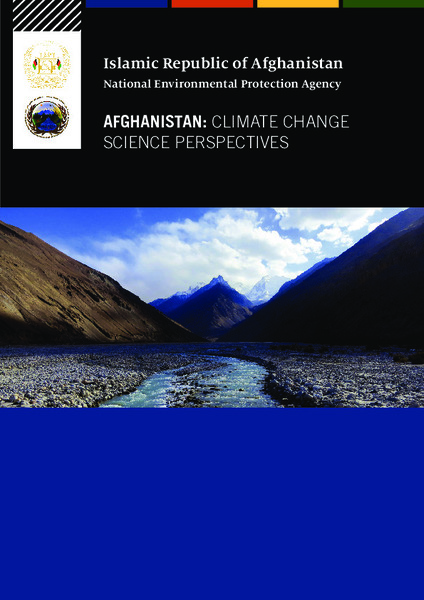Afghanistan: Climate Change Science Perspectives

Date
2016Author
United Nations Environment Programme
Afghanistan National Environmental Protection Agency
Citation Tool
Bibliographic Managers
RT Generic T1 Afghanistan: Climate Change Science Perspectives A1 United Nations Environment Programme, Afghanistan National Environmental Protection Agency YR 2016 LK https://wedocs.unep.org/20.500.11822/42280 PB AB TY - GEN T1 - Afghanistan: Climate Change Science Perspectives AU - United Nations Environment Programme, Afghanistan National Environmental Protection Agency Y1 - 2016 UR - https://wedocs.unep.org/20.500.11822/42280 PB - AB - @misc{20.500.11822_42280 author = {United Nations Environment Programme, Afghanistan National Environmental Protection Agency}, title = {Afghanistan: Climate Change Science Perspectives}, year = {2016}, abstract = {}, url = {https://wedocs.unep.org/20.500.11822/42280} } @misc{20.500.11822_42280 author = {United Nations Environment Programme, Afghanistan National Environmental Protection Agency}, title = {Afghanistan: Climate Change Science Perspectives}, year = {2016}, abstract = {}, url = {https://wedocs.unep.org/20.500.11822/42280} } TY - GEN T1 - Afghanistan: Climate Change Science Perspectives AU - United Nations Environment ProgrammeUnited Nations Environment Programme, Afghanistan National Environmental Protection Agency UR - https://wedocs.unep.org/20.500.11822/42280 PB - AB -View/Open
Item Statistics
Display item statisticsMetadata
Show full item recordDescription
Afghanistan’s variety of different climates has a large natural variability; however, over recent decades people are beginning to perceive climatological changes. There are very few scientific studies on climate change in Afghanistan. Analysis of past climate and future climate projections for Afghanistan only exist from a study of the Tyndell Center for UNDP and DFID country profiles of which results are also published in a study of the Stockholm Environmental Institute (SEI) on the socio-economic impacts on climate change from 2009. The analysis of the past is based on observations of station data which have large gaps, especially after 1970.This report intends to update the former findings and evaluate the consistency with a new generation of climate models. Due to the large gaps in the observation data, reanalysis data has been analyzed for different regions in Afghanistan (Figure 1) from 1950 to 2010. For future climate trends, seven different RCM GCM combinations generated from the CORDEX5 project have been evaluated. Their grid size is 0.5° and Afghanistan is covered by over 300 cells in total, which permits a spatially detailed analysis.
Collections
Document Viewer
To read more, scroll down below.

